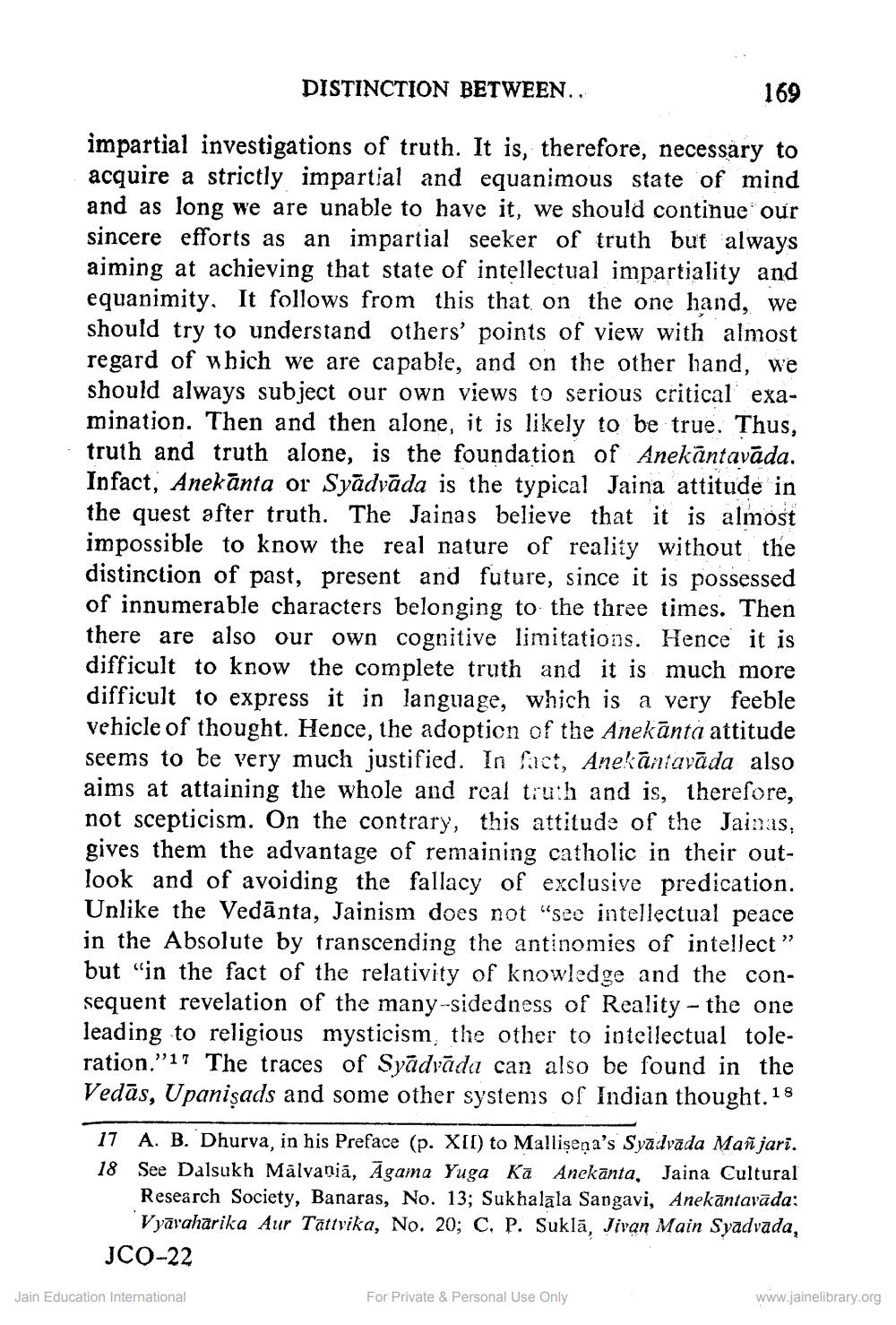________________
DISTINCTION BETWEEN..
169
impartial investigations of truth. It is, therefore, necessary to acquire a strictly impartial and equanimous state of mind and as long we are unable to have it, we should continue our sincere efforts as an impartial seeker of truth but always aiming at achieving that state of intellectual impartiality and equanimity. It follows from this that on the one hand, we should try to understand others' points of view with almost regard of which we are capable, and on the other hand, we should always subject our own views to serious critical examination. Then and then alone, it is likely to be true. Thus, truth and truth alone, is the foundation of Anekāntavāda. Infact, Anekānta or Syādvāda is the typical Jaina attitude in the quest after truth. The Jainas believe that it is almost impossible to know the real nature of reality without the distinction of past, present and future, since it is possessed of innumerable characters belonging to the three times. Then there are also our own cognitive limitations. Hence it is difficult to know the complete truth and it is much more difficult to express it in language, which is a very feeble vehicle of thought. Hence, the adoption of the Anekānta attitude seems to be very much justified. In fact, Anekāntavāda also aims at attaining the whole and real tru:h and is, therefore, not scepticism. On the contrary, this attitude of the Jainas, gives them the advantage of remaining catholic in their outlook and of avoiding the fallacy of exclusive predication. Unlike the Vedānta, Jainism does not "see intellectual peace in the Absolute by transcending the antinomies of intellect” but "in the fact of the relativity of knowledge and the consequent revelation of the many-sidedness of Reality - the one leading to religious mysticism, the other to intellectual toleration.”'17 The traces of Syādvāda can also be found in the Vedās, Upanişads and some other systems of Indian thought. 18 17 A. B. Dhurva, in his Preface (p. XII) to Mallişena's Syadvada Mañ jari. 18 See Dalsukh Mālvania, Agama Yuga Ka Anekanta, Jaina Cultural
Research Society, Banaras, No. 13; Sukhalala Sangavi, Anekāntavāda:
Vyāraharika Aur Tättvika, No. 20; C. P. Suklā, Jivan Main Syadvada, JCO-22
For Private & Personal Use Only
Jain Education International
www.jainelibrary.org




